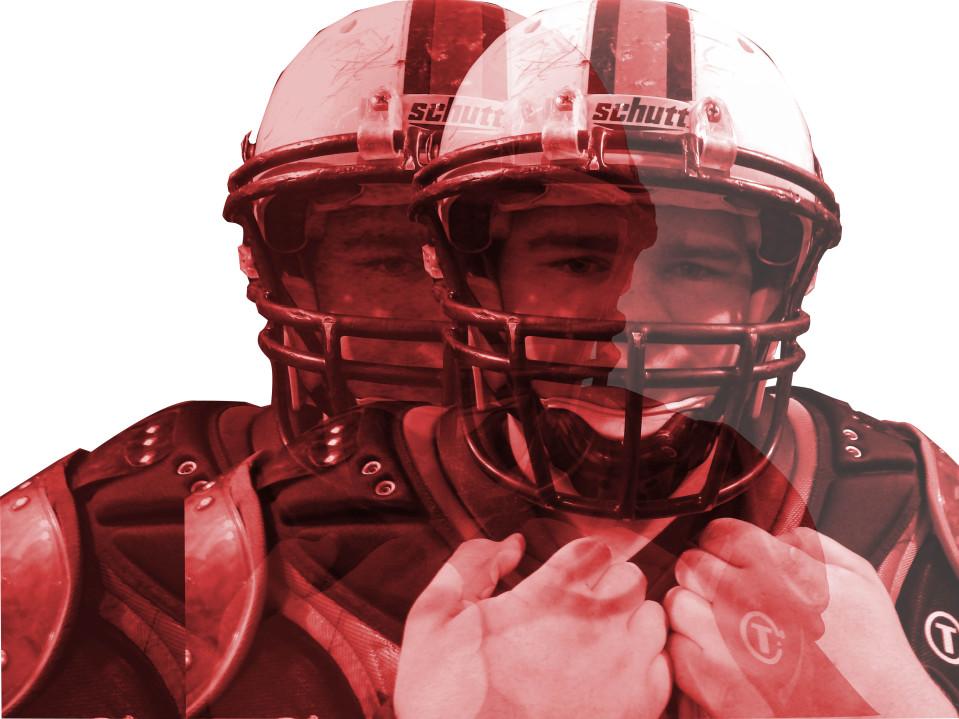Confronting the jarring truth
November 14, 2013
According to senior Charlie Houghton, headaches are far from unusual in football. However, he said he knew the headache he had during the game Sept. 27 against Cooper was not quite like the rest.
“The whole time I was really confused about everything that was happening. But it really hit me when I was driving home afterward, and I could not remember how to get home,” Houghton said.
Houghton is part of a growing nationwide trend of increasing amounts of head injuries among athletes everywhere, particularly football players. Research efforts, spearheaded by the Center of Traumatic Encephalopathy at Boston University, primarily by Dr. Ann McKee, have revealed startling statistics regarding the effects of years of football on an athlete’s brain, even at younger ages like in high school.
One of McKee’s research assistants at Boston University, Brian Fry, said while the impacts suffered by high school athletes usually will not be as severe as those incurred by professionals, the effects can carry greater risk.
“The brains of adolescents are still developing a ton, so suffering a serious brain injury could mean a much more worrisome effect,” Fry said. “There could be serious repercussions down the line for development.”
Studies reveal concerning dangers
According to the Centers for Disease Control and Prevention (CDC), a concussion consists of a forceful bump or jolt to the head that results in rapid movement of the cranium and consequently of the brain inside the skull. While immediate symptoms can be temporary effects such as confusion, dizziness, clumsiness, slurred speech and other notable physical differences, the initial symptoms may be some of the weakest ones, according to Fry.
“The biggest thing high school players can do to help themselves is recognize the possibility of a concussive hit right away, which comes with education,” Fry said.
“If you immediately check yourself out (of a game) to be reviewed and diagnosed by a medical employee, you can avoid possible drastic consequences. Educating yourself is the best defense you can have,” Fry said.
In addition to the CDC reports, a study released in October 2013 by the National Academy of Sciences said high school athletes, and particularly football players, are twice as likely to suffer from a concussion in high school athletics than in college sports.
Fry said this is the result of a lack of resources and ability to assess concussions immediately, resulting in multiple concussions before the brain recovers.
“Without the proper training, many players are sent back into the game for the sake of the team or their desire to play, unaware that they are risking with a second concussion suffering from severe brain swelling and blood circulation being cut off,” Fry said.
Nationwide trend hits home
During the past several years, the amount of concussions at Park has increased, according to athletic trainer Julie Strenkowski.
“Across the board I’ve seen an increase in concussions,” Strenkowski said. “This could be because of multiple reasons including more reportings of concussions. Concussions are starting to become an injury that is being taken a little more seriously.”
This season, junior football player Xavier Lawson received a concussion, ending his season early.
“It was the second to last game of the football season,” Lawson said. “All I remember is getting hit from behind. It’s all just a blur from there on.”
Lawson said he has suffered from his concussion to this day.
“I just recently was diagnosed with temporary short-term memory loss. It has really affected me in school,” he said.
Most recently in the football game Oct. 22 against Apple Valley, junior Duncan McIntyre received a concussion from repeated hits to the head and said soon after the side effects were hurting his academic performance.
“I came into school the next day, and I had an English test. The words were moving a bit on the paper, and it was hard to focus,” he said.
Football is not the only sport seeing serious repercussions from head injuries. Sophomore hockey player Elena Basill has suffered three concussions in her life, the most recent of which happened Dec. 6, 2012, resulting in her being taken off the ice on a stretcher.
“It’s my favorite sport, but if I get another one I will be done,” she said.
Senior synchronized swimmer Rose Evensen suffered a concussion in her freshman year when she hit her head on the bottom of the pool. Evensen said recovering from concussions properly is important.
“It is frustrating when people are out of the season, but it’s better than being affected by it all your life,” she said.
Lawson said he believes concussion awareness should be emphasized around the high school.
“I feel that students who haven’t had a concussion don’t really know what could happen to them and that they should be taught about it,” he said. “It’s a serious issue that comes with playing physical contact sports at St. Louis Park.”




